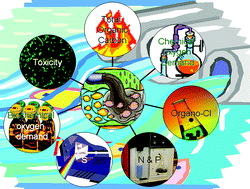A set up of a modern analytical laboratory for wastewaters from pulp and paper industry
Abstract
The introduction of analytical techniques allowing rapid, selective, sensitive, and reliable determination of aqueous pollutants is of crucial importance for the protection of the environment. This critical review summarizes the advanced analytical techniques suggested over the last ten years together with already established methods, and evaluates whether they are fit for wastewater quality assessment considering the area of application, interferences, limit of detection, calibration function, and precision. The key parameters of wastewater quality assessment are: total organic carbon (TOC), chemical oxygen demand (COD), biochemical oxygen demand (BOD), organochlorines (AOX), nitrogen, phosphorus, sulfur, and toxicity. Chromatography and capillary electrophoresis, photocatalytic oxidation with semiconductor nanofilms and atomic emission spectrometry, optical fibre sensors and chemiluminescence, amperometric mediated biosensors and microbial fuel cells, respirometry and bioluminescence measurements are just part of the proposed wastewater analyst’s toolkit. The diversity of fundamental phenomena and the captivating elegance of interdisciplinary applications involved in the development of wastewater analytical techniques should attract the interest of a wide scientific audience including analytical chemists, chemical physicists, microbiologists and environmentalists. To conclude, we suggest a laboratory set up for the analysis of wastewaters from the pulp and paper industry.


 Please wait while we load your content...
Please wait while we load your content...